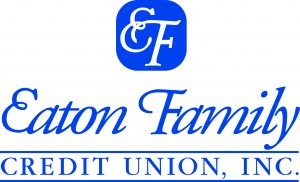More References for Financial Literacy topics
Adams, A. L. (2021). Financial literacy resources. Public Services Quarterly, 17(4), 256–261.
America saves. America Saves. (n.d.). Retrieved March 3, 2023, from https://americasaves.org
Building wealth: a beginner’s guild to securing your financial future. Dallas Fed. (n.d.). Retrieved March 2, 2023, from https://www.dallasfed.org/-/media/microsites/cd/wealth/online/ch1.html
García-Santillán, A., Zamora-Lobato, T., & Molchanova, V. S. (2021). Money management, savings and investment as central topics in financial education: How do high school students perceive them? European Journal of Contemporary Education, 10(3), 626–637.
Hastings, J. S., Madrian, B. C., & Skimmyhorn, W. L. (2013). Financial literacy, financial education, and economic outcomes. Annual Review Econonics, 5(1), 347-373.
Hoffmann, A., & Otteby, K. (2018). Personal finance blogs: Helpful tool for consumers with low financial literacy or preaching to the choir? International Journal of Consumer Studies, 42(2), 241–254.
Mandell, L., & Klein, L. S. (2009). The impact of financial literacy education on subsequent financial behavior. Journal of Financial Counseling and Planning, 20(1), 15–24.
Sconti, A. (2022). Digital vs In-person financial education: What works best for Generation Z? Journal of Economic Behavior & Organization, 194, 300–318.
Totenhagen, C. J., Casper, D. M., Faber, K. M., Bosch, L. A., Wiggs, C. B., & Borden, L. M. (2015). Youth financial literacy: A review of key considerations and promising delivery methods. Journal of Family and Economic Issues, 36, 167–191.
Resources and Links
Created by the U.S. Congress in 1970, the National Credit Union Administration is an independent federal agency that insures deposits at federally insured credit unions, protects the members who own credit unions, and charters and regulates federal credit unions.
The Consumer Financial Protection Bureau is a U.S. government agency dedicated to making sure consumers of financial services are treated fairly by banks, lenders and other financial institutions.
The St. Louis Fed is one of 12 Federal Reserve banks is an operating arm of the Federal Reserve System. The banks carry out various functions, including operating a nationwide payment system, distributing the nation’s currency and coin, supervising and regulating member banks and bank holding companies, and serving as the banker for the U.S. Treasury. The Federal Reserve banks are located in Boston, New York City, Philadelphia, Cleveland, Richmond, Atlanta, Chicago, St. Louis, Minneapolis, Kansas City, Dallas and San Francisco.
America Saves, a campaign managed by the nonprofit Consumer Federation of America, motivates, encourages, and supports low- to moderate-income households to save money, reduce debt, and build wealth. The research-based campaign uses the principles of behavioral economics and social marketing to change behavior. Non‐profit, government, and corporate groups participate in America Saves nationally and through local, regional, and statewide campaigns around the country. America Saves encourages individuals to take the America Saves pledge and organizations to promote savings year-round and during America Saves Week.
Still Have Questions?
Don’t hesitate to reach out to us anytime

Address
333 Babbitt Road
Euclid, Ohio 44123
Member@eatonfamilycu.com